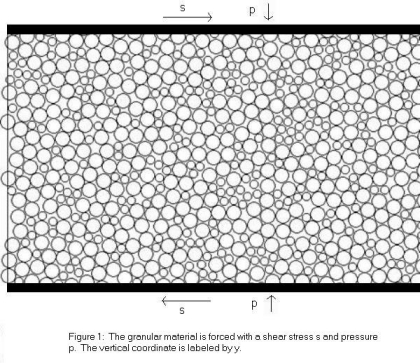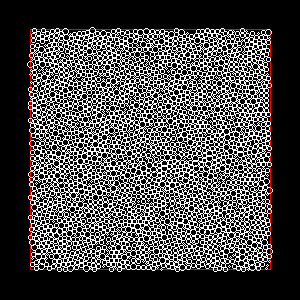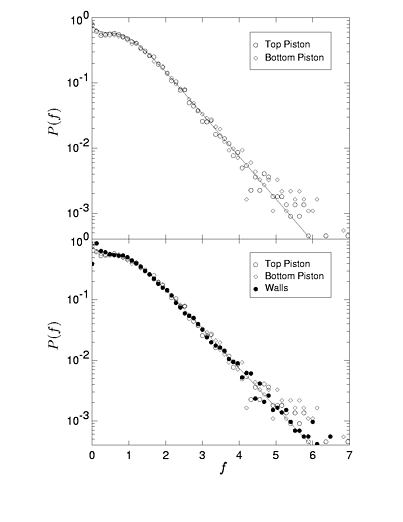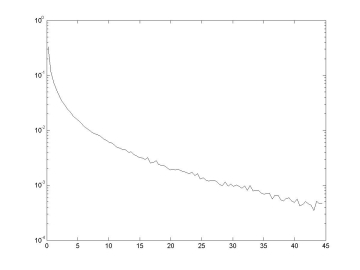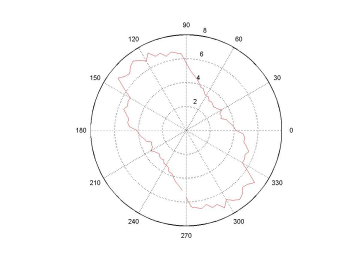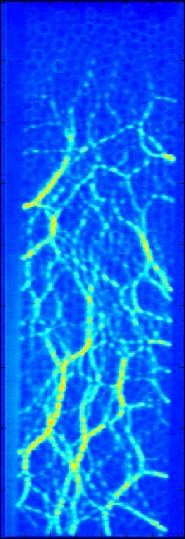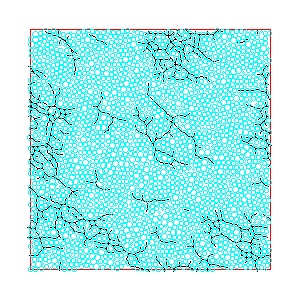Granular Materials
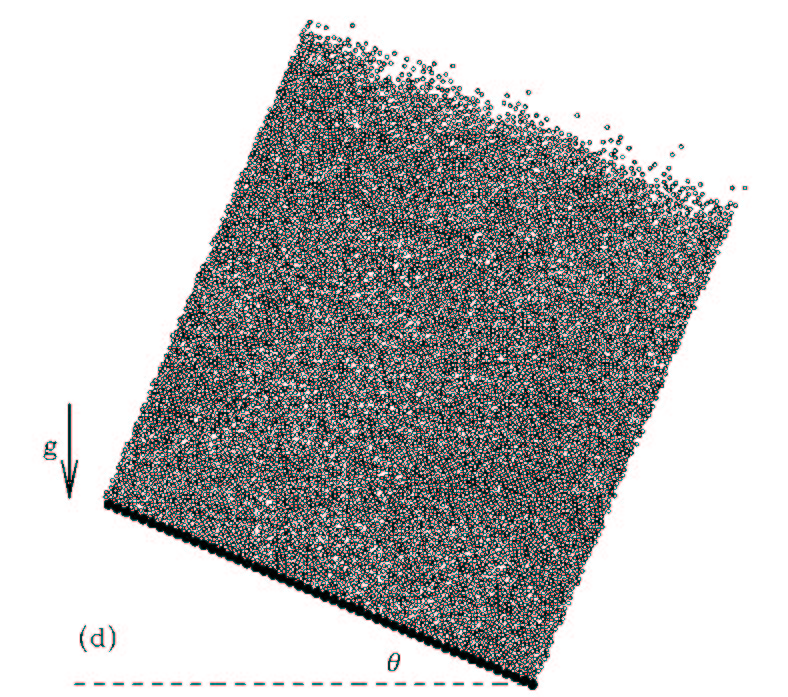 A granular material on an incline plane, from simulations
by Silbert
and coworkers (2002)
A granular material on an incline plane, from simulations
by Silbert
and coworkers (2002)
For example, if a granular material is heaped on an inclined plane, then the large scale state of the system depends on the angle of the plane. For large angles the granular material flows like a non-Newtonian liquid. For small angles the granular material will behave like a solid and remain stationary. The value of the critical angle between these phases depends on the preparation history, and the transition between the phases is a manifestation of the glass transition. As you can see, there is a lot of interesting and complex physics to be understood by studying just the large scale properties of a granular material in such a simple arrangement. As the composition becomes more complicated, the behavior becomes even richer.
From a small scale point of view, the characteristics that make granular materials interesting are inelastic collisions and the unimportance of temperature. Because collisions between particles are inelastic then the energy of a granular material is a dynamic quantity, and because the particles that make up a granular materials are macroscopic then temperature does not produce significant motion. Ultimately we would like to describe the properties of a granular material using statistical arguments, but since there is no well defined energy or temperature then conventional equilibrium statistical mechanics does not apply. A full understanding of granular materials will require an extension of statistical mechanics, which is of great fundamental interest. One central question concerning such a statistical theory is whether the robust yet fragile concept central to complexity in the HOT approach is apparent in a granular material, which is very simple compared to ecological and biological systems.
 Granular materials
Granular materials